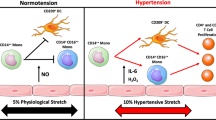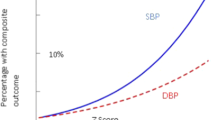Abstract
Research into the pathogenesis of hypertension has, in the past, tended to concentrate on changes in vascular geometry, cardiac output and blood volume. However, patients with hypertension are known to be at an increased risk of both coronary heart disease and cerebrovascular disease; complications which are thrombotic in origin. Since rheological and haemostatic factors are known to be involved in thrombogenesis, their potential role in the pathogenesis of patients with hypertension has received increasing attention. The purposes of this review are to update previous reviews and to summarise the relationship between hypertension, its complications and treatment and a range of haemorheological factors.
This is a preview of subscription content, access via your institution
Access options
Subscribe to this journal
Receive 12 digital issues and online access to articles
$119.00 per year
only $9.92 per issue
Buy this article
- Purchase on Springer Link
- Instant access to full article PDF
Prices may be subject to local taxes which are calculated during checkout
Similar content being viewed by others
Author information
Authors and Affiliations
Rights and permissions
About this article
Cite this article
Lee, A. The role of rheological and haemostatic factors in hypertension. J Hum Hypertens 11, 767–776 (1997). https://doi.org/10.1038/sj.jhh.1000556
Received:
Accepted:
Issue Date:
DOI: https://doi.org/10.1038/sj.jhh.1000556
Keywords
This article is cited by
-
Sex-specific associations between systolic, diastolic and pulse pressure and hemostatic parameters in the population-based KORA-Fit study: a cross-sectional study
Thrombosis Journal (2023)
-
Central aortic pulse pressure, thrombogenicity and cardiovascular risk
Journal of Thrombosis and Thrombolysis (2017)
-
Aluminum Trichloride Induces Hypertension and Disturbs the Function of Erythrocyte Membrane in Male Rats
Biological Trace Element Research (2016)
-
Erythrocyte Membrane Properties in Patients with Essential Hypertension
Cell Biochemistry and Biophysics (2013)
-
Pulmonary thromboembolism in an East African tertiary referral hospital
Journal of Thrombosis and Thrombolysis (2011)



